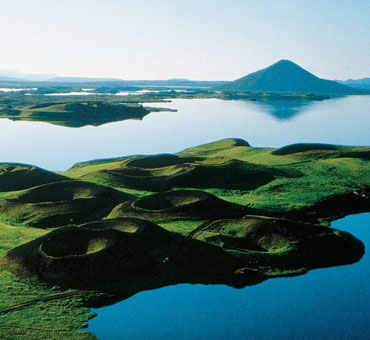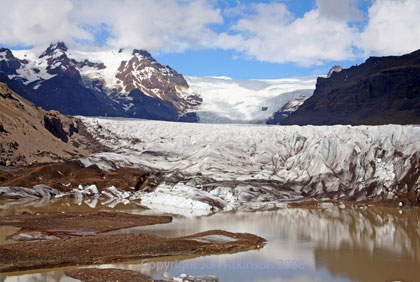Iceland
Country statistics

Land area: 38,707 sq miles (100,251 sq km)
Total area: 39,769 sq miles (103,000 sq km)
Population (2010 est.): 313,183 (growth rate: 0.674%); birth rate: 13.23/1000; infant mortality rate: 3.18/1000; life expectancy: 81
Capital City: Reykjavik
Monetary unit: Icelandic króna
Languages: Icelandic, English, Nordic languages, German widely spoken
Ethnicity/race: homogeneous mixture of Norse/Celtic descendants 94%, population of foreign origin 6%
Religions: Church of Iceland (Evangelical Lutheran) 87.1%, other Protestant 4.1%, Roman Catholic 1.7%, other 7.1% (2002)
Country introduction

Iceland is located in the North Atlantic Ocean just south of the Arctic Circle, which passes through the small island of Grimsey off Iceland's northern coast, but not through mainland Iceland. Unlike neighbouring Greenland, Iceland is considered to be a part of Europe, and not a part of North America.
Iceland has a great variety of stunning scenery and unspoilt wilderness that include rust-red craters, cobalt-blue lakes and luminous green moss that punctuate a sea of black sand.
There are coastlines of sandy beaches, rugged cliffs and tranquil fjords throngs with birds, while off shore six species of whale and dolphin regularly captivate visitors on whale watching trips. Iceland is nature in the raw.
The culture

Iceland's literacy rate is among the highest in the world, and a love of literature, art, chess, and other intellectual pursuits is widespread.
An important key to understanding Icelanders and their culture (and which differentiates them from many contemporary Nordic peoples) is the high importance they place on the traits of independence and self-reliance. Icelanders are proud of their Viking heritage and Icelandic language. Modern Icelandic remains close to the Old Norse spoken in the Viking Age.
Icelandic society and culture is very 'woman friendly', with many women in leadership positions in government and business. Women retain their names after marriage, since Icelanders generally do not use surnames but patronyms or matronyms.
One of the most popular activities in Iceland is visiting the geothermal spas and pools that can be found all around the country. They are popular with tourists as well.
Attractions & landmarks

Iceland has four national parks: Jökulsárgljúfur National Park, Skaftafell National Park, Snæfellsnes National Park, and þingvellir.
One park in particular, the Skaftafell National Park is dominated by Vatnajökull, which is the largest and most voluminous Icelandic glacier, and largest by area in Europe. Many walks, climbs and hikes are possible in the area. The glacier has a maximum thickness of 1,000 m (3,280 ft), but it has tongues that have lodged in lower areas, allowing easy access for visitors.
Iceland is also home to the most active volcano located in the south. Over 20 eruptions have occurred in and around the volcano since 874. During the Middle Ages, Europeans called the volcano the "Gateway to Hell".
Another popular destination is the Gullfoss, one of Iceland's most beautiful waterfalls. It is located in the canyon of Hvítá river in South-west Iceland. Gullfoss is called the "Golden Falls", since on a sunny day the water plunging down the three step staircase and then tumbeling in two steps down into the 32 m (104 ft) deep crevice truly looks golden.
Geysir, sometimes known as The Great Geysir, is located in South-west Iceland and is one of the world's most famous geysers. It can send boiling hot water up to 60 m (196 ft) in the air. It is not very active anymore and has rarely erupted in recent years, but just a few hundred meters away there is another geyser, Strokkur, which erupts every 10 minutes or so.